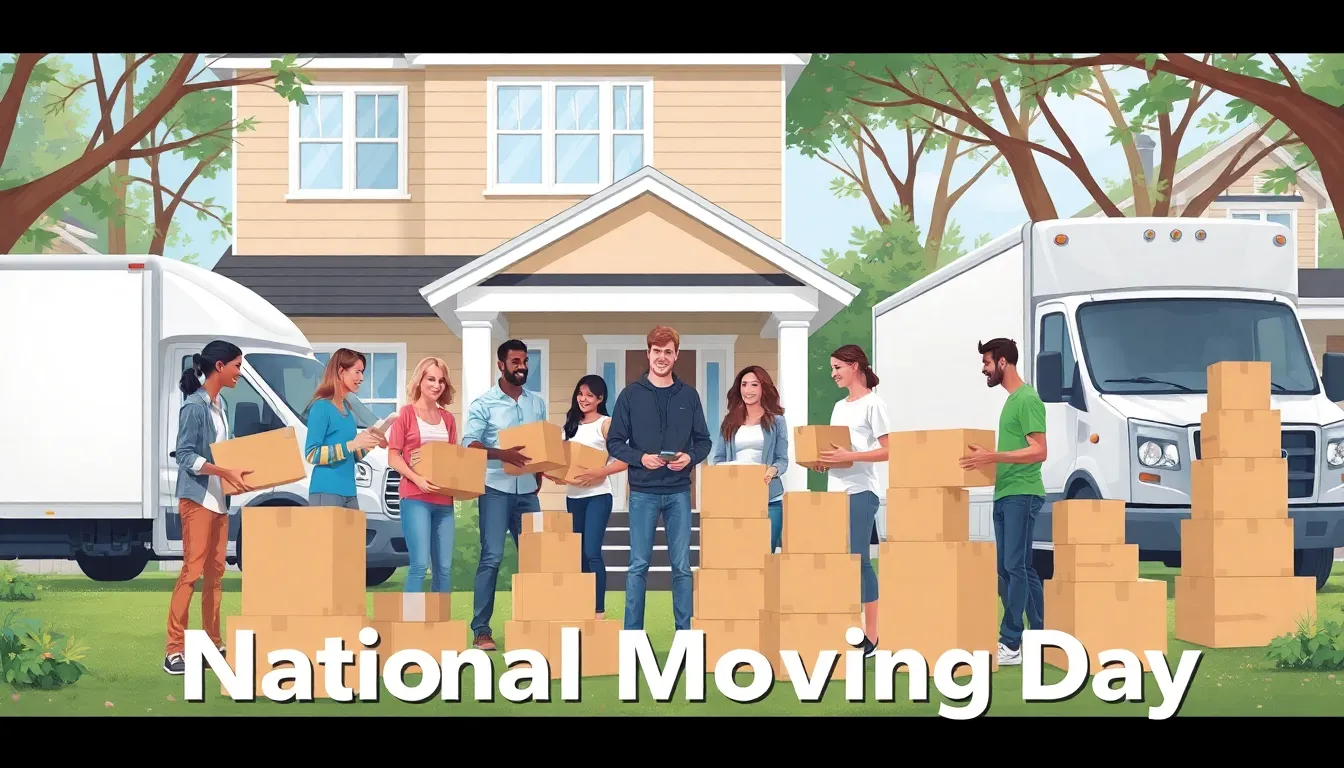Every year, millions of people across the country brace themselves for the chaos of National Moving Day. It’s that one day when the universe seems to conspire against you, turning your perfectly organized plans into a game of Tetris gone wrong. Picture this: boxes stacked like a Jenga tower, furniture that mysteriously weighs more than a small car, and the ever-elusive missing sock that’s somehow managed to escape your moving efforts.
Table of Contents
ToggleWhat Is National Moving Day?
National Moving Day occurs annually on the last Saturday of April. This day marks one of the busiest times for moving and relocation across the United States. Many families and individuals choose this date to transition to new homes, aligning with the advent of warmer weather.
Traditionally, National Moving Day signifies the end of the lease for numerous renters. Large volumes of traffic congestion appears in neighborhoods as moving trucks become ubiquitous. People often navigate challenging logistics, such as scheduling movers and packing belongings efficiently.
Statistics show that approximately 35 million people move each year in the U.S., with a significant percentage choosing this day for their relocations. This surge in moving activities leads to increased demand for moving services, resulting in a crowded marketplace. Competition among moving companies heightens, prompting specialized promotions and discounts to attract customers.
Preparation plays a crucial role on National Moving Day. Many individuals create detailed plans, often laying out timelines for packing and moving tasks. Early mornings become common as families strive to maximize daylight.
Challenges abound as last-minute arrangements often complicate the moving process. Eventualities such as unexpected delays and inclement weather can hinder seamless transitions. Despite these obstacles, National Moving Day fosters a sense of excitement, as new beginnings await those making the leap.
The History of National Moving Day


National Moving Day has garnered attention as an annual event reflecting the challenges associated with relocating. This day serves as a pivotal moment for many families and individuals across the United States.
Origin of the Day
The concept of National Moving Day traces back to the historical practices of leases expiring in late April. This timing aligns with favorable weather conditions that encourage moving. The last Saturday in April emerged as the preferred moving day for many renters, offering a convenient transition period. Initial celebrations of this day reflected the practical aspects of community relocations, emphasizing the necessity of planning and organization during the moving process.
Significant Changes Over the Years
National Moving Day has transformed significantly since its inception. Originally focused solely on families moving between leases, it now includes various demographics and relocation types, such as college students and professionals. Increased urbanization has heightened awareness of the day, resulting in diverse planning strategies. Moreover, advancements in technology have influenced how people organize their moves, with mobile apps facilitating logistics. Current trends highlight a shift toward eco-friendly moving practices, addressing sustainability in a crowded marketplace. The evolution of this event showcases its relevance in an ever-changing society.
Tips for Planning Your Move on National Moving Day
Planning ahead significantly eases the moving process on National Moving Day. A well-structured approach leads to a smoother experience.
Creating a Moving Checklist
Building a moving checklist lays the foundation for an organized move. Start with key tasks such as decluttering and sorting belongings. Track important deadlines, like notifying landlords and setting up utilities at the new location. Consider adding dates for packing specific rooms like the kitchen and living area. Prioritize packing non-essential items first to minimize daily disruptions. Include any necessary arrangements for moving supplies, like boxes and tape, as well. Review the checklist regularly to ensure all tasks stay on track.
Finding Reliable Movers
Finding reliable movers requires thorough research and comparison. Begin by seeking recommendations from friends or family who’ve recently moved. Compile a list of at least three moving companies to evaluate. Read online reviews and check ratings to gauge customer satisfaction. Request quotes from each company, ensuring they reflect similar services for accurate comparisons. Verify that the movers possess appropriate licenses and insurance. Confirm availability for National Moving Day, given the high demand. Lastly, engage with the chosen movers for a detailed discussion about logistics and expectations.
The Impact of National Moving Day on Local Communities
National Moving Day significantly influences local communities across the United States. This day not only marks a transition for individuals and families but also causes noticeable changes within neighborhoods. Increased traffic congestion occurs as moving trucks fill residential streets, making navigation challenging for both movers and local residents.
Local businesses benefit from the surge in activity. Grocery stores, hardware stores, and furniture retailers often see heightened sales as newcomers stock their new homes. Additionally, the demand for local services such as internet installation and landscaping increases, creating temporary jobs and boosting the economy.
Community dynamics shift as new residents settle in. Diverse populations with fresh perspectives enrich neighborhoods, promoting cultural exchange and new friendships. Local engagement becomes essential, with newcomers joining community events and organizations, thus fostering a sense of belonging.
The event also poses challenges for long-standing residents. Noise and disruption from moving activities can frustrate those already established in the area. Moreover, the influx of new neighbors may lead to rising property values and rental prices, prompting existing residents to reconsider their housing situations.
Data from the U.S. Census Bureau shows approximately 35 million Americans move each year, with a considerable number choosing the last Saturday in April for their relocations. Recognizing this trend helps city planners prepare for increased population mobility. Urban infrastructure and public services adjust accordingly, ensuring that neighborhoods can accommodate new families effectively.
Community events and welcome programs often arise in response to National Moving Day. By organizing social gatherings, local governments and organizations promote interaction between existing residents and newcomers, easing the transition and fostering community spirit.
Overall, National Moving Day’s impact on local communities is multifaceted, shaping economic opportunities, altering demographics, and influencing social dynamics.



